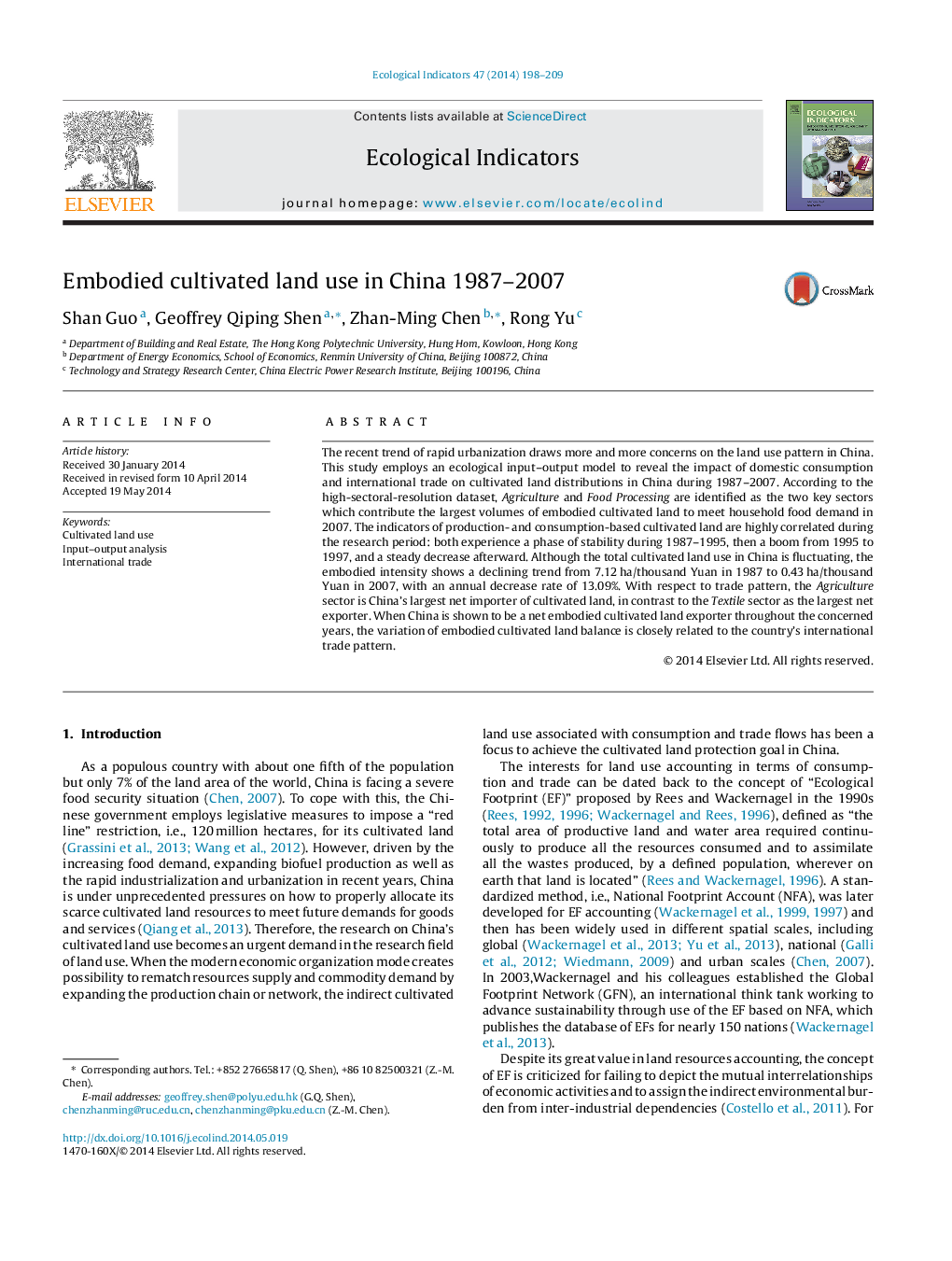| Article ID | Journal | Published Year | Pages | File Type |
|---|---|---|---|---|
| 4373030 | Ecological Indicators | 2014 | 12 Pages |
The recent trend of rapid urbanization draws more and more concerns on the land use pattern in China. This study employs an ecological input–output model to reveal the impact of domestic consumption and international trade on cultivated land distributions in China during 1987–2007. According to the high-sectoral-resolution dataset, Agriculture and Food Processing are identified as the two key sectors which contribute the largest volumes of embodied cultivated land to meet household food demand in 2007. The indicators of production- and consumption-based cultivated land are highly correlated during the research period: both experience a phase of stability during 1987–1995, then a boom from 1995 to 1997, and a steady decrease afterward. Although the total cultivated land use in China is fluctuating, the embodied intensity shows a declining trend from 7.12 ha/thousand Yuan in 1987 to 0.43 ha/thousand Yuan in 2007, with an annual decrease rate of 13.09%. With respect to trade pattern, the Agriculture sector is China's largest net importer of cultivated land, in contrast to the Textile sector as the largest net exporter. When China is shown to be a net embodied cultivated land exporter throughout the concerned years, the variation of embodied cultivated land balance is closely related to the country's international trade pattern.
